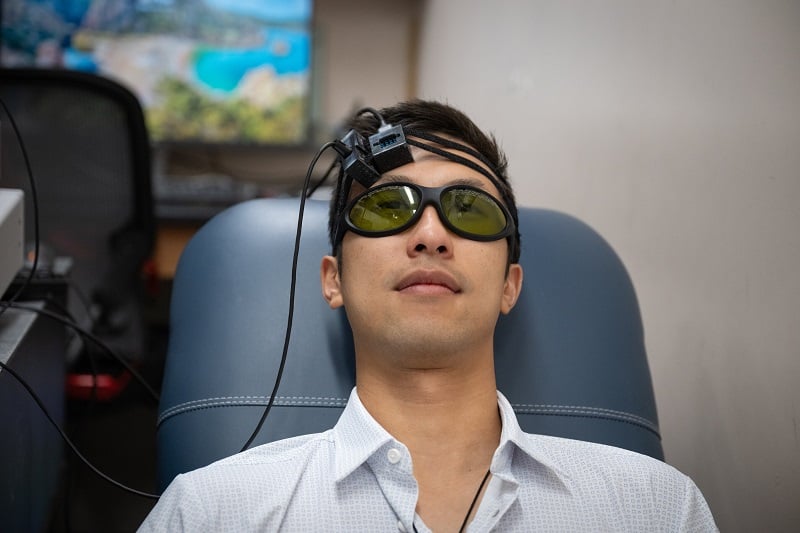Despite the danger stroke presents to large segments of the population, clinicians have historically been at a disadvantage in successfully identifying those at grave risk of having a stroke ahead of time. But a team from the California Institute of Technology and Keck School of Medicine of the University of Southern California has created a headset based on relatively basic laser and detector technology that could be fitted on patients to dramatically change the health trajectory of those at risk.
A stroke occurs when blood flow to the brain is interrupted – usually due to a blocked or damaged blood vessel – and brain tissue is damaged. According to the World Stroke Organization, there are 12.2 million new strokes per year around the world, with 101 million people living with long-term health impacts.
The aforementioned team devised a way to monitor patients noninvasively by using a technique called speckle contrast optical spectroscopy, which measures the decrease in light intensity from where light enters the skull to where it is collected, as well as the degree of speckle. This determines the volume and flow of blood in the brain’s blood vessels. By using this technique on a study group, the team was able to demonstrate that blood flow can serve as a guide of potential stroke risk prior to the onset of a catastrophic event among those likely to experience one.

Researcher Yu Xi Huang is seen wearing the speckle contrast optical spectroscopy device, which can assess stroke risk. Courtesy of Lance R. Hayashida/California Institute of Technology.
For the study, the team chose 50 participants from the Pasadena and Los Angeles areas, ages 18 to 65. The group was screened through the Cleveland Stroke Risk Calculator, which provides a preliminary stroke risk assessment based on a number of indicators, such as family history and general health. Subjects were asked to hold their breath, which alters blood flow and dilates the blood vessels in healthy patients.
In their research, the team described the headset of relatively simple construction, containing a single-mode continuous wave laser diode (785 nm) in a 3D printed mount on side of the participants’ foreheads. It was positioned 5 mm away from the skin. Mounted on the other side of the forehead was a USB-board camera with a sensor, collecting 60 fps. Measurements were taken before, during, and after the breath holding exercises.
The researchers noted that the forehead was chosen because speckle contrast optical spectroscopy devices have been shown to work better on hairless areas. And in this case, the headset showed marked differences between low-risk and high-risk subjects, namely that those in the lower-risk category experienced higher blood flow, due to an inability of their blood vessels to fully dilate.
Simon Mahler, a postdoctoral scholar in the lab of Changhuei Yang and co-author of the paper, said that in the future, the group hoped to use the device to track several hundred patients over a five-year span to make their data more robust, possibly aided by machine learning.
“Once we collect data from a larger cohort of subjects in future studies, we would like to apply machine learning techniques to further improve our results and potentially extract and identify new features,” he said.
Yang said there is potential for the headset for health applications beyond stroke. “This instrumentation can also be used for traumatic brain injury detection, which is another project we are currently working on,” he said.
The research was published in Biomedical Optics Express (www.doi.org/10.1364/BOE.534796).